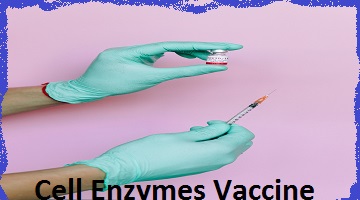Enzymes of Cell Biology
The cytoplasmic matrix and many cellular organelles contain very important organic compounds known as enzymes. The word enzyme had been proposed by Kuhne in 1878. The enzymes are specialized proteins and they have the capacity to act as catalysts in chemical reactions.
The substance of the enzyme on which the enzymes act is known as a substrate of enzymes. The enzymes play a vital role in various metabolic and biosynthetic activities of the cell such as synthesis of DNA, RNA, and protein molecules and catabolism of carbohydrates, lipids, fats, and other chemical substances. The cellular organelles which we have classified are:
1. Oxideductases. The enzymes catalyzing the oxidation and reduction reaction of the cell are known as oxidoreductases.
2. Transferases. The enzymes which transfer following groups from one molecule to others is known as transferases: one carbon, aldehydic or ketonic reduces, acyl, glycosyl, alkyl, nitrogenous, phosphorous-containing groups, and sulfur-containing groups.
3. Hydrolases. These enzymes hydrolyze a complex molecule into two compounds by adding the element of the water across the bond which is cleaved. These enzymes act on the following bonds ester, glycosyl, ether, peptide, other C-N bonds, acid anhydride, C - C, Khalid, and P - N bonds.
4. Lysates. The lyase enzymes add or remove groups to or from the chemical compounds containing the doubles bonds. The lysates act on C - C, C - O, C - N, C - S, and C- halide bonds.
5. Isomerases. These enzymes catalyze the reaction involving in the isomerization or intramolecular rearrangements in the substrates, e.g., intramolecular of oxidoreductases, intramolecular of transferases, intramolecular of lysates, cis and trans-isomerases, racemases, and epimerases of isomer.
6. Ligases or synthetases. The enzymes linkage of the molecules through splitting a phosphate bond ligases. The synthetase enzymes of cell biology form C - O, C - S, C - N, and C - C bonds of isomers.
The enzymes have been classified that are given below:
a. Proteases ( endopeptidases and exopeptidases)
c. Amylases
d. Esterases
e. Dehydrogenases
f. Oxidases
g. Decarboxylases
h. Hydrases
i. Transferases and
j. Isomerases
The specific action in enzymes that have many factors such as pH scale, the temperature of the enzyme, and the concentration of substrate effect, and the rate of the activity of enzymes in cell biology. Certain enzymes present in the inactive form that is called proenzymes and zymogens and these are activated through other enzymes that are kinases and perform catalytic activities of the enzyme. Likewise, the enzyme trypsinogen of the pancreatic cells has activated in the stomach intestine through the enzyme enterokinases and the enzyme pepsinogen of the best cells of the stomach has activated through the hydrochloric acid which is secreted through parietal cells.
Prosthetic groups and
Coenzymes
Certain enzymes such as cytoplasms are the conjugated proteins and contain the prosthetic group as metalloporphyrins complex in their molecules.
Certainly, enzymes cannot best function single but this function may be through the addition of the small molecules of enzymes and other chemical substances that are called coenzymes. The inactive enzyme ( which can't function singly) is known as the apoenzymes. The apoenzymes and coenzymes are collectively known as holoenzymes. For instance, the enzymes hydrogenases is an apoenzyme which can function either with the coenzymes NAD+ or NADP.
Some main coenzymes factors are given below:
1. Nicotinamide adenine dinucleotide (NAD)
2.
Nicotinamide adenine dinucleotide phosphate
(NADP)
3.
Flavine adenine mononucleotide (FAM)
4.
Flavine adenine dinucleotide (FAD)
5.
Ubiquinone (coenzyme Q or Q)
6.
Lipoic acid (LIP or S₂ )
7.
Adenosine triphosphate (ATP)
8.
Pyridoxal phosphate (PALP)
9.
Tetrahydrofolic acid (CoF)
Adenosyl methionine
1 1. Biotin
1 2. Coenzyme A (CoA)
1 3. Thiamine pyrophosphate (TPP)
1 4. Uridine diphosphate (UDP)
Isoenzymes of Cell Biology
Right now, it has investigated and few enzymes have similar activities related to isoenzymes and almost the same molecular structures of isoenzymes in cell biology. These enzymes have a relation with heredity (later and Skillen, 1969, and Weyer 1968). There are almost100 isoenzymes in the cell of cell biology, for example., lactic dehydrogenase (LDH) gets in the form of 5 identical isoenzymes of the cell.
See also
